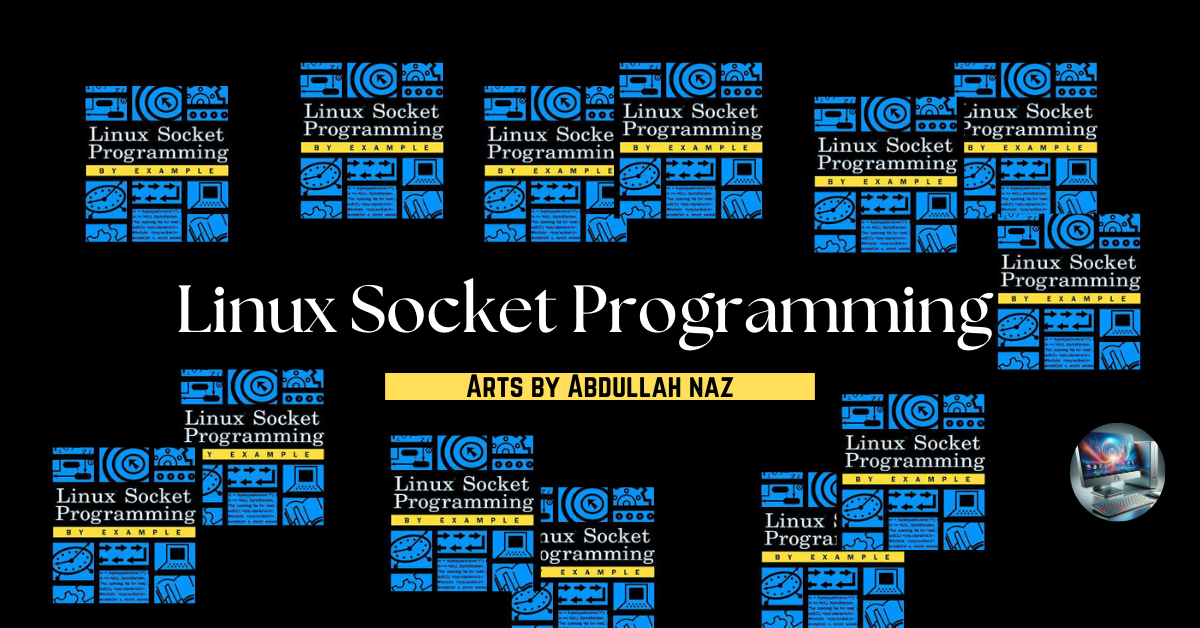Understanding the Fundamentals
Sockets are the bedrock of community communique in Linux. They offer an interface for packages to send and acquire data over networks. A stable grasp of socket sorts, alternatives, and APIs is important for powerful community programming.
Key Socket Types:
- Stream sockets: Connection-oriented, bidirectional, byte streams (TCP).
- Datagram sockets: Connectionless, unreliable, message-based totally (UDP).
- Raw sockets: Direct admission to network protocols for low-stage packet manipulation.
Socket Options: Fine-Tuning Network Behavior
Socket options are configuration parameters that influence a socket’s behavior.
- SO_REUSEADDR: Permits multiple sockets to bind to the same deal with and port.
- SO_KEEPALIVE: Enables hold-alive probes to stumble on broken connections.
- SO_LINGER: Controls the behavior of the last socket.
- TCP_NODELAY: Disables the Nagle algorithm for instant facts transmission.
- IP_TOS: Sets the Type of Service (TOS) area in IP headers.
Non-blocking I/O and Event-Driven Programming
Efficiently dealing with multiple customers necessitates non-blocking off I/O and occasion-pushed programming.
- Select, poll, and epoll: System requires monitoring a couple of record descriptors for I/O occasions.
- Asynchronous I/O: Libraries like libevent and libev for asynchronous operations.
- Reactor and Proactor Patterns: Architectural patterns for occasion-pushed systems.
Example: A Simple Echo Server using Select
C++
// … (code as provided in the previous response)
Use code with caution.
Socket Security
Protecting data in transit is paramount. Employ the following security measures:
- SSL/TLS: Use SSL/TLS libraries like OpenSSL to encrypt statistics communication.
- Authentication: Implement robust authentication mechanisms to verify customer identities.
- Authorization: Controls get admission to assets primarily based on user roles and permissions.
- Input Validation: Validate person input to save you vulnerabilities like buffer overflows and SQL injection.
- Secure Coding Practices: Adhere to secure coding suggestions to reduce security dangers.
High-Performance Socket Programming
To build high-performance and scalable network applications, consider the following techniques, with a particular focus on optimizing for Plug Box Linux:
- Multithreading and Multiprocessing: Utilize multiple threads or techniques to handle concurrent connections successfully.
- High-Performance Networking: Optimize network overall performance with the aid of tuning TCP parameters, the usage of green algorithms, and minimizing device calls.
- UDP Multicasting: Explore UDP multicast for one-to-many communique situations.
- Raw Sockets: Use raw sockets for low-degree community protocol manipulation while important.
- Network Programming Frameworks: Leverage frameworks like Boost. Asio, libuv, or Node. JS for simplified socket programming.
Debugging and Troubleshooting
Effective debugging is critical for figuring out and resolving problems in socket programming.
- Logging: Implement designated logging to tune application execution and become aware of mistakes.
- Debugging Tools: Utilize debuggers like GDB to step through code and investigate variables.
- Network Analysis Tools: Employ equipment like tcpdump for Wireshark to seize and analyze network visitors.
- Error Handling: Implement sturdy errors coping with mechanisms to gracefully manage exceptions.
Best Practices
- Code Reusability: Write modular and reusable code for maintainability and performance.
- Performance Optimization: Profile your code to identify bottlenecks and optimize consequently.
- Security: Prioritize security through following steady coding practices and using encryption.
- Testing: Thoroughly test your socket programs under various conditions.
- Documentation: Document code and layout choices for future reference and collaboration.
Real-World Applications
Socket programming has a wide range of applications, including:
- Web servers: Handling HTTP requests and responses.
- Online gaming: Managing real-time communication among customers and servers.
- File transfer applications: Implementing protocols like FTP or SFTP.
- Instant messaging: Creating actual-time chat packages.
- Distributed systems: Building distributed structures with inter-method verbal exchange.
Conclusion
Mastering Linux socket programming requires a blend of theoretical knowledge and practical experience. Learn the basics, explore advanced techniques, and follow best practices. Then, you can build strong, efficient network apps. Continuous learning and experimentation are key to staying ahead in this dynamic field.
FAQs
- What distinguishes UDP sockets from TCP sockets? TCP is connection-oriented, reliable, and ordered, at the same time as UDP is connectionless, unreliable, and unordered. TCP is appropriate for packages requiring dependable records transfer, even as UDP is used for applications that may tolerate packet loss, such as video streaming or online gaming.
- How can I improve socket performance? To enhance socket overall performance, consider using non-blocking off I/O, optimizing buffer sizes, tuning TCP parameters, and the use of green algorithms. Additionally, profiling your software can help identify performance bottlenecks.
- What are some common socket programming errors? Common socket programming mistakes encompass incorrect socket introduction, binding, listening, or accepting connections, mistaken mistakes dealing with resource leaks, and safety vulnerabilities.
- How can I secure my socket-based application? To steady your socket-based utility, use encryption (SSL/TLS), put in force sturdy authentication and authorization mechanisms, validate consumer enter, and follow secure coding practices.
By studying these superior socket programming strategies and best practices, you may expand strong, efficient, and secure network packages.

